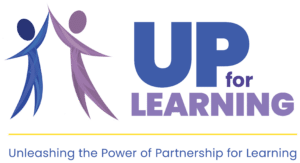History of Sound Check: Our Time
This media arts project began when a group of students, teachers, and consultants noticed a disturbing trend in the fall of 2015. Those youth-adult teams from seven high schools were part of Communicating School Redesign (CSR), an initiative to promote public understanding and support for Vermont’s ambitious vision of educational change. Our state’s vision for 21st-century learning became law in 2013 with passage of Act 77, also called the Flexible Pathways legislation. This law is intended to create a shift in the way students learn, emphasizing relevance, choice, and students’ roles as active learners. Requiring new methods such as Personalized Learning Plans and flexible routes to graduation, the law encourages students to become co-creators of their education.
Brain research tells us that empowering learners in this way, moving to a more active and student-centered model, will engage a greater number of students. It will also build critical life-long learning skills, increase post-secondary options, and nurture civic responsibility. By putting these promising research findings into action in Vermont schools, Act 77 aims to promote the best possible practices for teaching and learning, It offers students far higher levels of voice and choice. People who saw that potential this past year—like the students and adults involved in Communicating School Redesign—had high hopes for positive change as schools began to work on meeting the law’s requirements.
That’s when the disturbing trend appeared. As they conducted interviews and surveys, the CSR teams encountered student skepticism rather than empowerment. Instead of embracing their great new opportunities, many students were unsure, cautious, even suspicious. Why this lack of enthusiasm? Maybe they weren’t used to taking the initiative in their education; if they hadn’t had a lot of choice and control before, perhaps they weren’t ready to take charge now. And maybe they saw this as one more thing adults were imposing on them, a lot of new words and new work coming at them, with little connection to their own world. Young people were not alone, as some teachers and parents also questioned a new state mandate coming down from “the top.” Whatever the reasons, it seemed as if many students just didn’t see themselves in the picture of Vermont’s bright educational future.
In response, the CSR teams asked a new set of questions: What if a message about the new design for learning came from students themselves? What if they could use their own language and a compelling medium instead of the more formal texts about school remodeling efforts? What if a different approach could give students all over the state a chance to talk about the issues of school change, exploring its potential and also expressing their concerns? What if community dialogue was grounded in what matters to students today, but also strikes a chord with learners of all ages?
From these questions, the idea of communicating with youth peers through song emerged. Working with UP for Learning, a Vermont organization that promotes youth-adult partnership in education, the CSR leadership team organized a new project, Sound Check. It rallied youth to capture a student’s-eye-view of Vermont’s shift toward student-centered learning. While writing a song was first and foremost a way for students to help each other explore the potential of school change, Sound Check participants expected that their message would also reach across the generations. They believed in the wisdom of youth and their capacity to capture the essence of an issue when speaking their unfiltered truth.
The project began with a group of twelve talented student musicians from eight Vermont schools, who came together for a two-day intensive song writing session. Under the skilled direction of musician and teacher Brian Boyes and singer-songwriter Kris Gruen, students collaborated to create the song “Our Time.” The music was then set to tracks and mixed at a professional sound studio. Next came the production of a music video. Schools across the state were invited to participate, and in the spring of 2016, over 150 Vermont students were filmed on-site, bringing the Our Time music video to life. A second, complementary video, Talking Our Time, features student songwriters explaining the song, its relationship to Act 77: Flexible Pathways, and their experience in the project.
{loadmodule mod_unite_revolution,Slider 4Rs}

